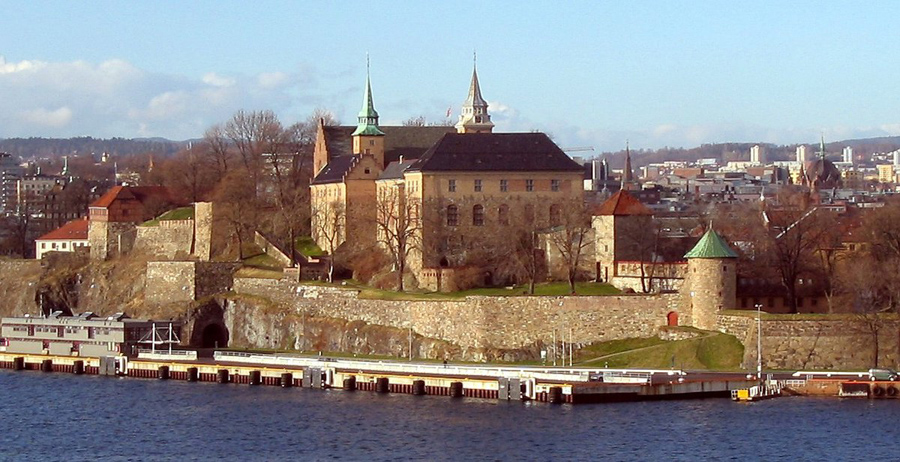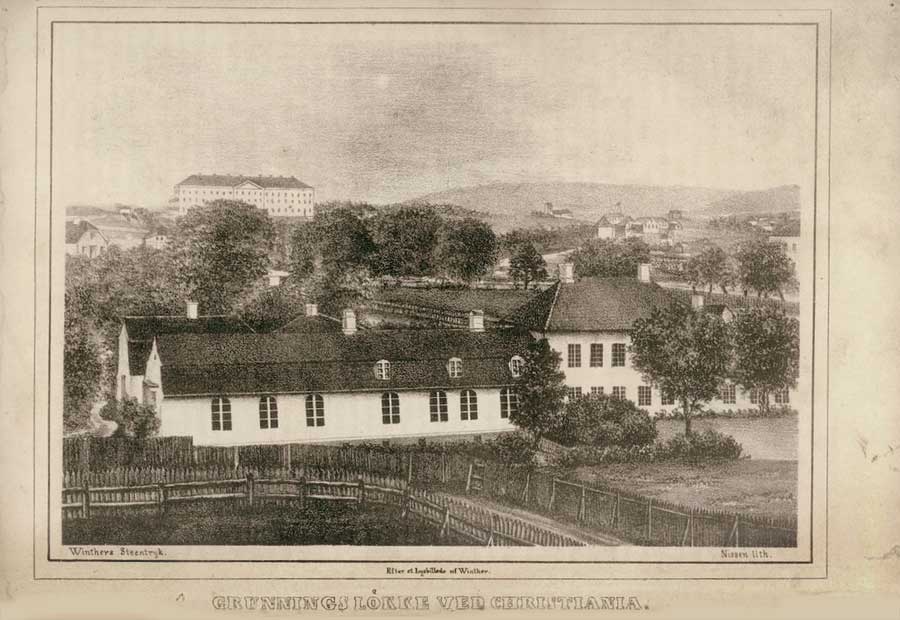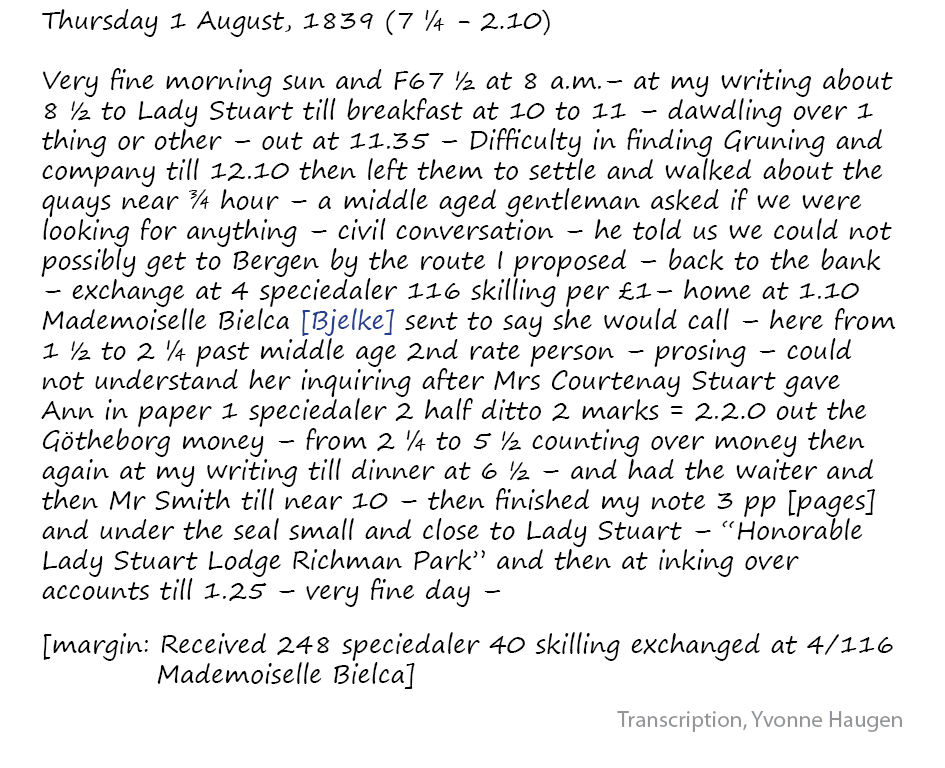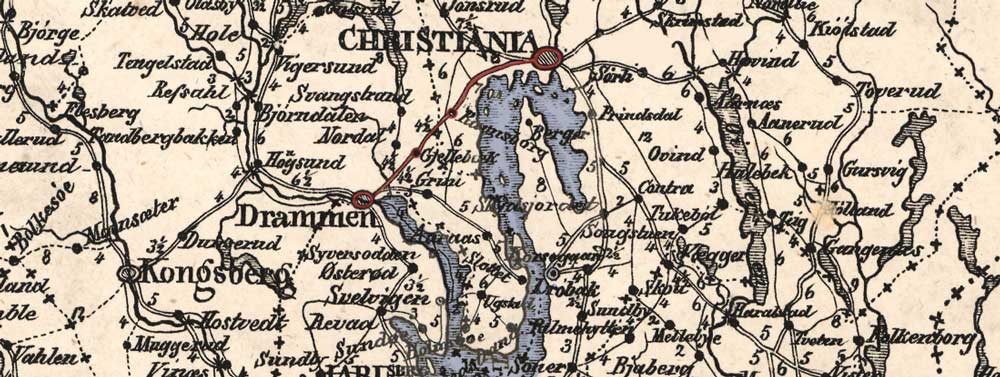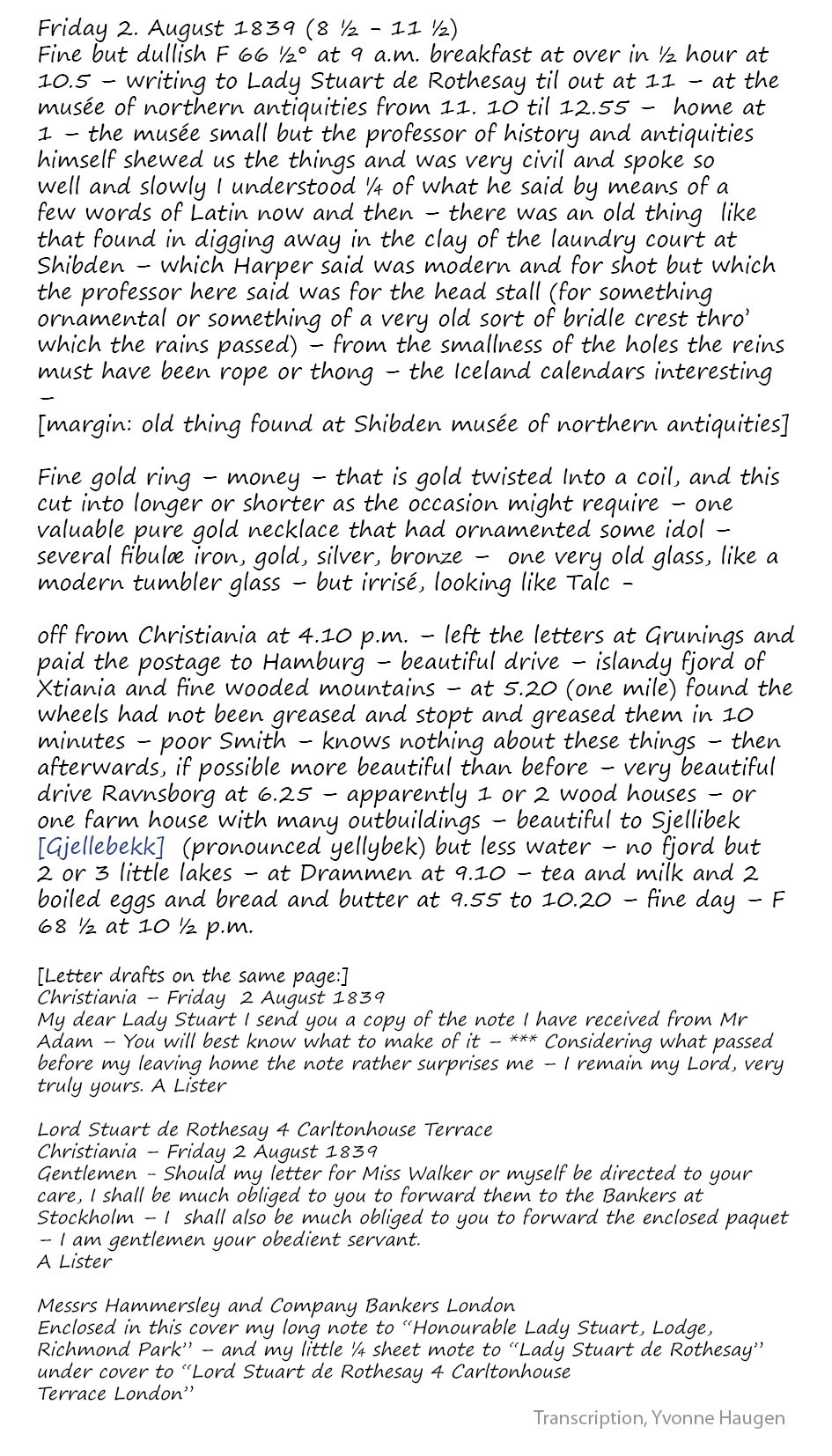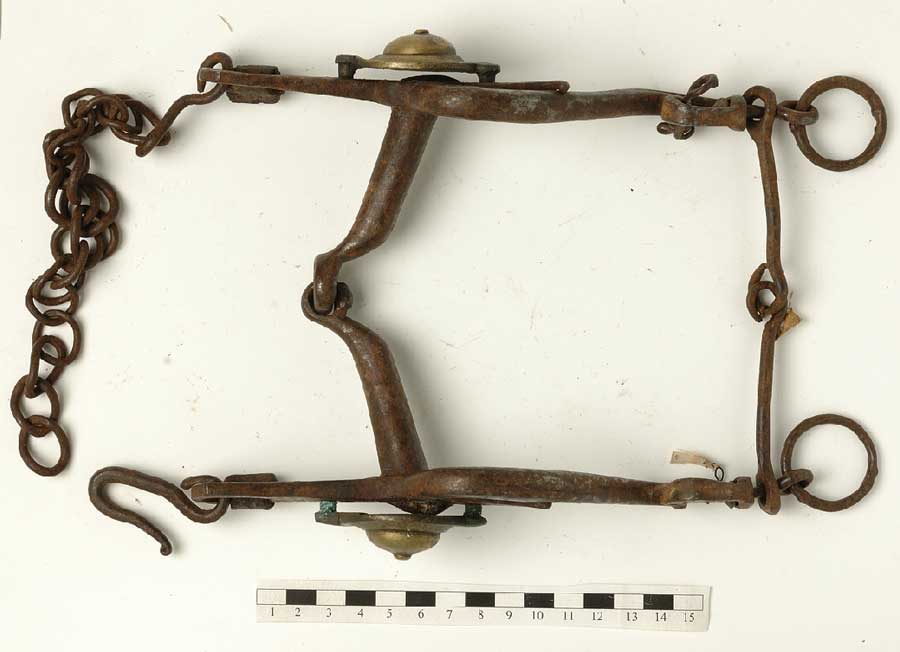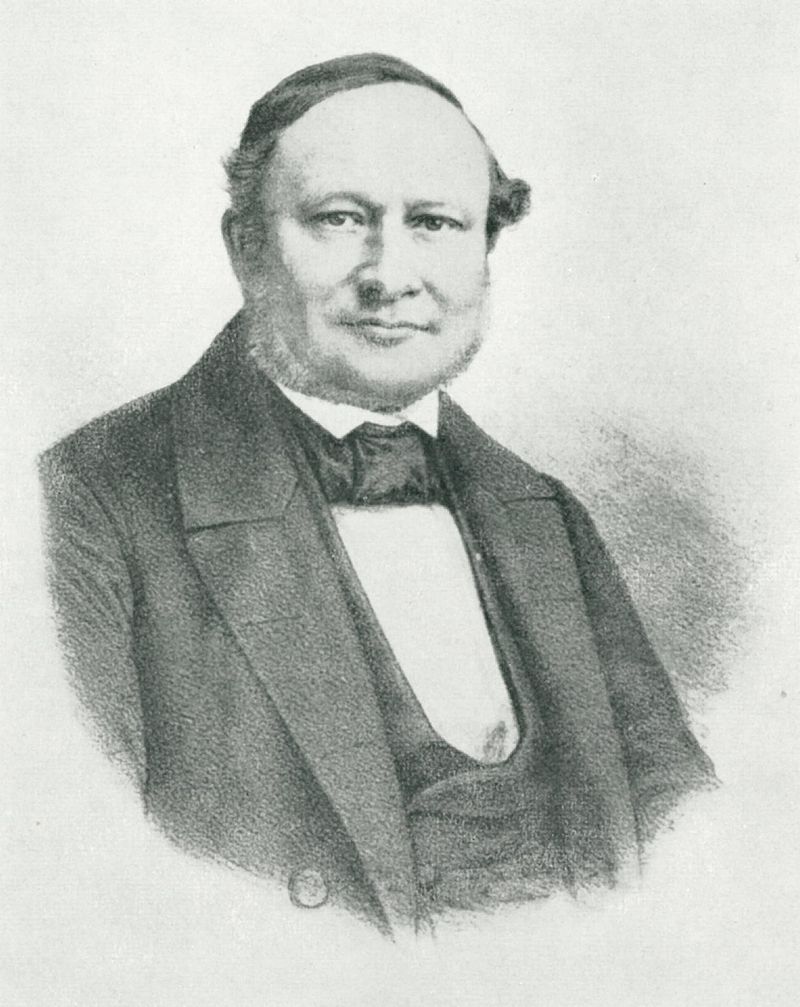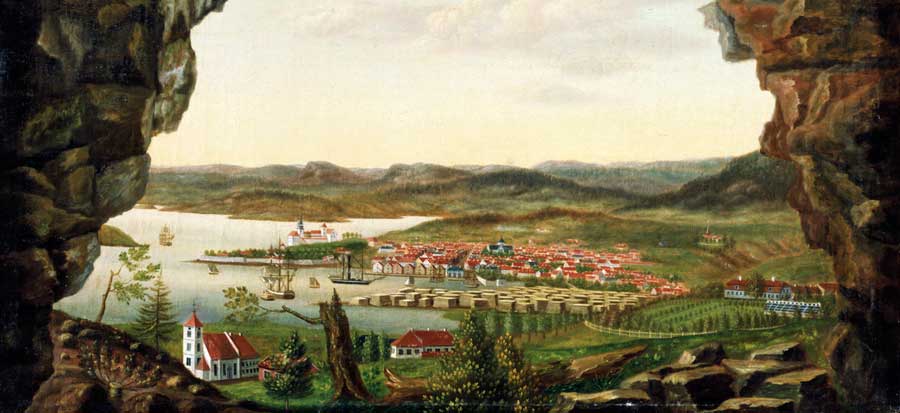
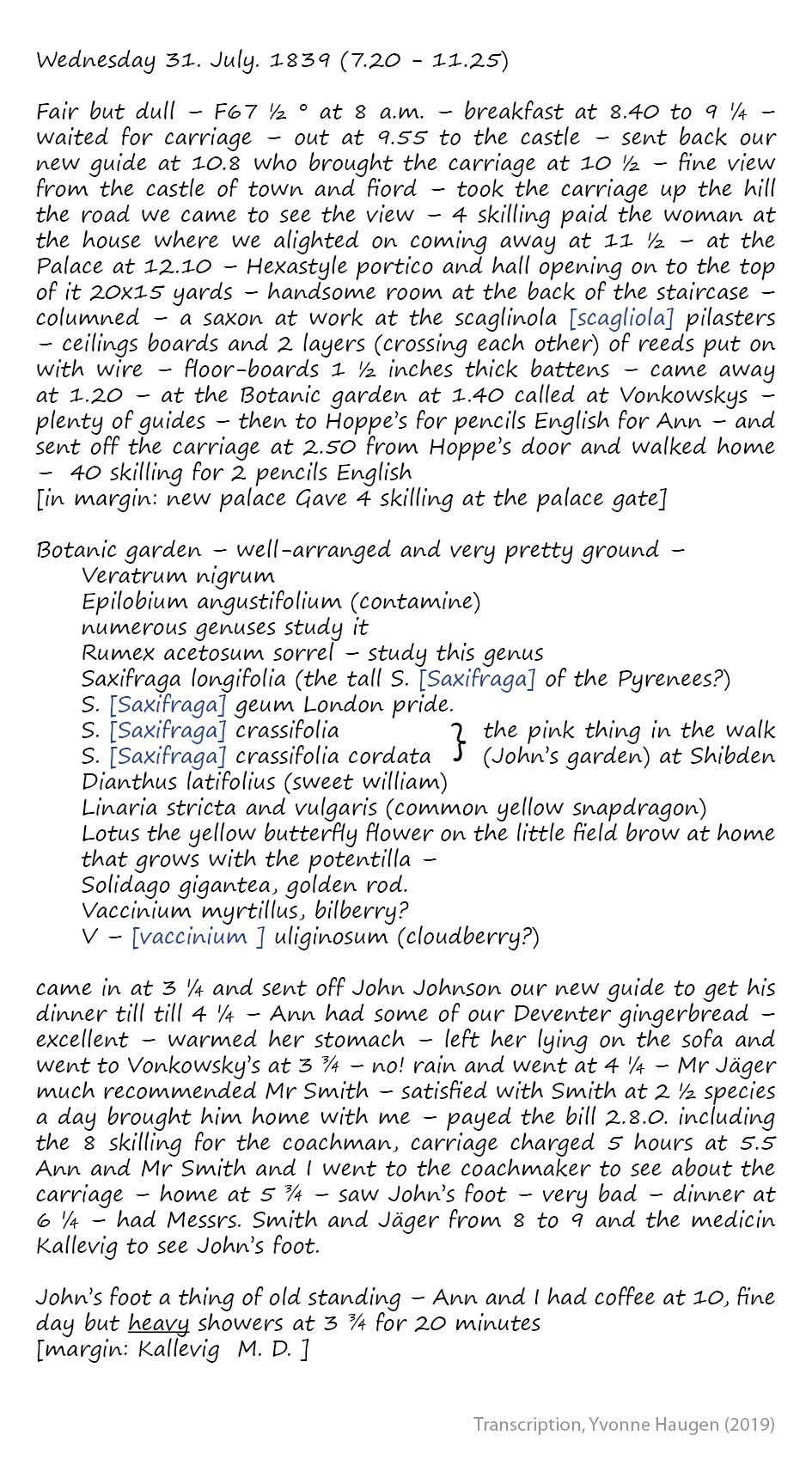
People
- Mr Jäger is likely Mr Georg Henrich Jæger (from the city of Arendal) – an agent at Guldberg & Dzwonkowski’s
- Kallevig M.D. could be Harald Kallevig, born in Arendal 15.04.1812, graduated (embetsexamen) in medicin 03.06.1835 (laud), noted in the listings at University of Oslo as “Død som Reservelæge paa Rigshospitalet” (“deceased senior registrar consultant (or senior resident attending physician) at Rigshospitalet”)
- Mr Smith, their guide on the Norway trip as recommended from Guldberg & Vonkowski’s, by Jæger. He is likely Axel Christian Rosenkrantz Smith (1813–1876). Both Jæger and Smith are from the city Arendal south in Norway.
- John is John Vanderholm, hired when in Sweden intended to be guide in Norway. But seemingly left behind in Christiania due to his bad foot.
- (John Johnson is likely John Vanderholm , the mixup could be caused by resent dealings with a Poul Poulson, valet du place at Hotel du Nord.)
- Hoppe’s see map
Places/spots:
Botanic garden
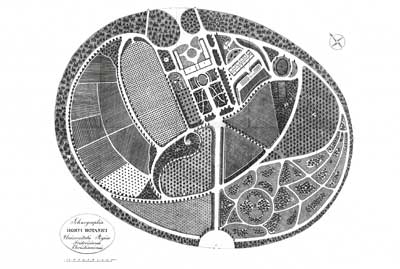
Anne had extensive knowledge of botany and seemed to always visit a city’s botanic garden on her travels. Christiania no exception and she noted a whole list of plants that she found interesting.
Read more about the botanic gardens of Christiania and Anne’s reflections on some of its contents.
Castle/ Akershus fortress
The Royal Palace
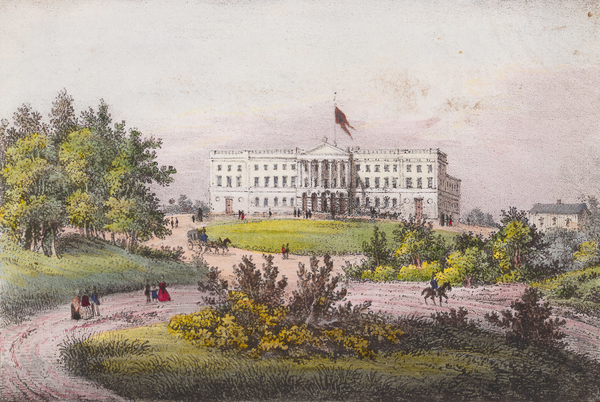
Det kongelige Slot / the Royal Palace / [lito] J. Frich (1840)
Bigger version
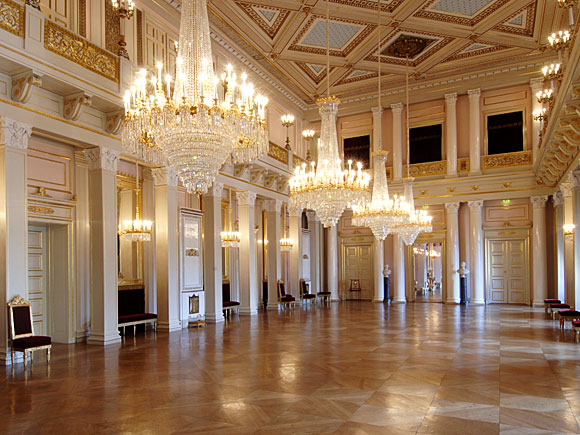
The Great Ballroom at the Royal Palace today.
Architect: Hans Ditlev Franciscus Linstow (1787-1851) (Work on the interiors began in 1838 and were finished in the 1840s)
Bigger version
Source: Slottet.no
Torvet, Byens Torv (today, Stortorvet)
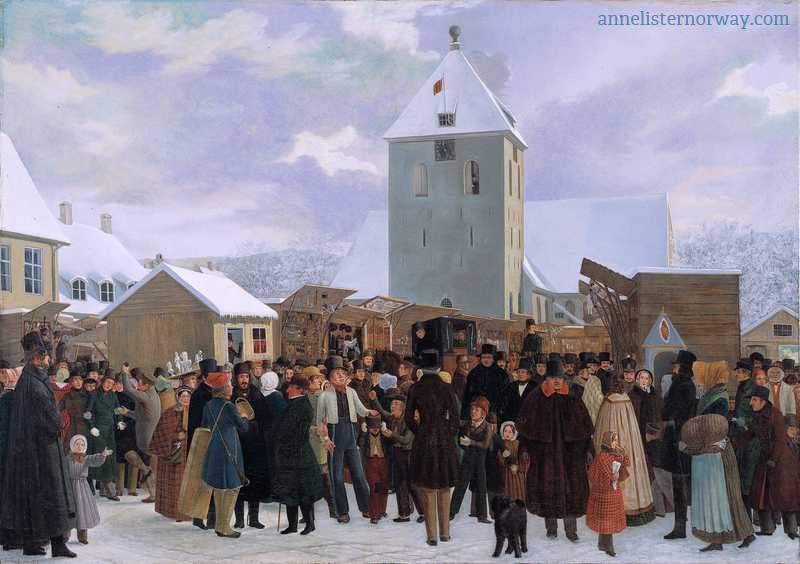
Torvet – the main square or market is just a couple of blocks from Hotel du Nord, where Anne and Ann stayed when in Christiania. The cathedral is situated at one end of the market, and Hoppe’s is right nearby. Read more about Torvet.
Map of Christiania (Oslo)
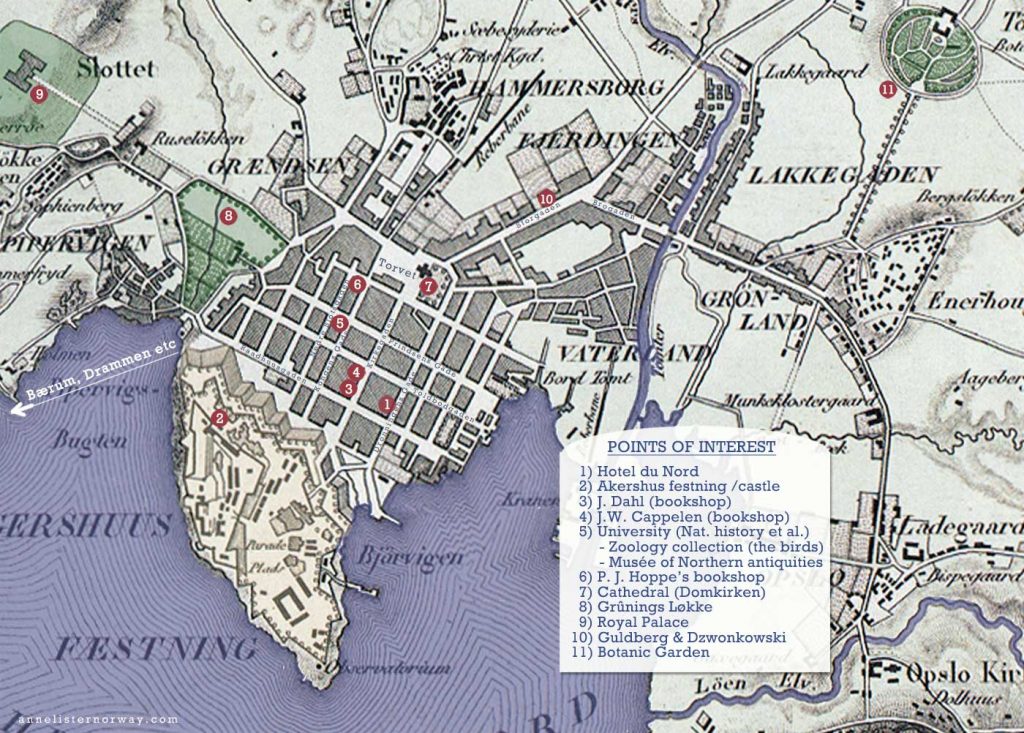
Points of interest
Map of Christiania from 1840 by unknown artist. Edited to highight the spots of interest from Anne’s travel journal
Click to see map and read more about the places in Christiania that Anne mentions
Fun Facts
Then to Hoppe’s for pencils English for Ann
Read more about The superiority of English pencils
